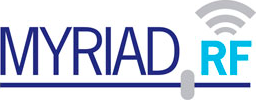The Noise Figure measurements I would assume used one of the following methods:
- noise figure meter
- gain method
- Y Factor method
( ref: https://www.maximintegrated.com/en/app-notes/index.mvp/id/2875 and Noise Figure Measurement Accuracy: The Y-Factor Method PDF Asset Page | Keysight )
My assumption would be that Lime Microsystems used an expensive noise figure meter, tuned the LimeSDR from 100 MHz to 3650 MHz in say 50 MHz steps, and then from data collected, generated the two graphs (system gain and noise figure).
There is also CANFI (Cheap Automatic Noise Figure Indicator), which I only mention because it is probably closer to the price range of most individuals. It is an open source program written in C# (that uses the Y method) which relies on a RTL-SDR, a calibrated noise source (and a noise source calibration file or an uncalibrated noise source with a calibration file - which is not easy to generate without access to expensive calibrated equipment) and a 50-ohm terminator. The source code could probably be adapted to use a LimeSDR.
http://www.canfi.eu/index.html
GitHub - dl2alf/CANFI: (C)heap (A)utomatic (N)oise (F)igure (I)ndicator with DVB-T stick
